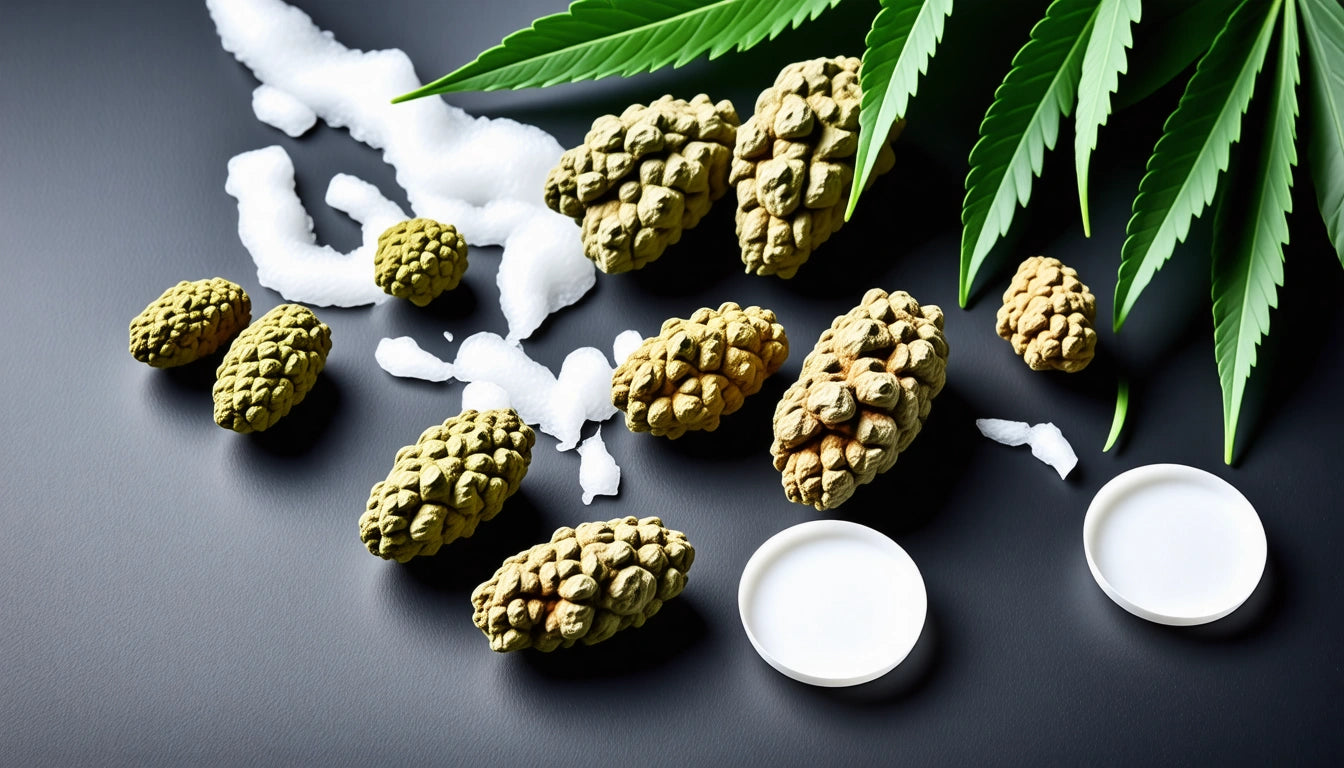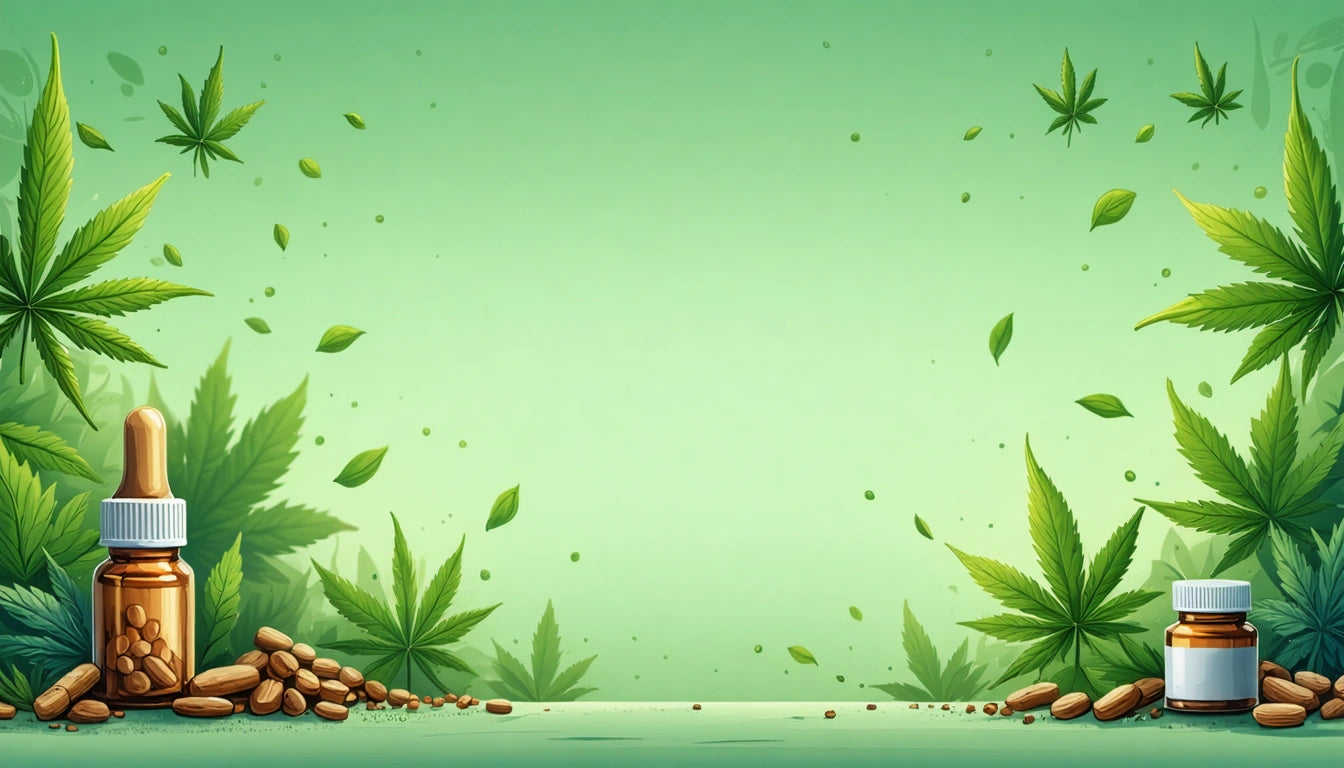Table of Contents
How to Decarb Cannabis: A Complete Guide to Decarboxylation Techniques
Decarboxylation is a crucial process that transforms raw cannabis into its active form. Whether you're creating edibles, tinctures, or topicals, knowing how to decarb cannabis properly ensures you'll get the full potential from your material. This comprehensive guide covers everything from basic techniques to advanced methods for different cannabis forms.
What is Decarboxylation?
Decarboxylation is the chemical reaction that removes a carboxyl group from cannabinoids, converting them to their active forms. In simple terms, it's the process that transforms THCA into THC and CBDA into CBD. Raw cannabis contains mostly inactive cannabinoid acids that must be activated through heat to produce the desired effects.
This transformation happens naturally when cannabis is smoked or vaporized, but for edibles and other cannabis products, a controlled decarboxylation process is necessary to activate the compounds without burning off valuable terpenes and cannabinoids.
Why Decarb Cannabis?
Decarboxylation is essential for several reasons:
- It activates THC and CBD, making them bioavailable
- It enhances the potency of edibles and tinctures
- It allows for better absorption when used in topicals
- It creates a more predictable and consistent effect
Without proper decarboxylation, your homemade edibles might deliver disappointing results or inconsistent effects. Understanding how decarbing affects cannabis is the first step toward creating effective products.
How to Decarb Flower and Shake
The most common form of cannabis to decarboxylate is flower or shake. Here's a step-by-step guide:
Oven Method (Most Common)
This method is accessible to most home users and provides reliable results.
- Preheat your oven to 240 °F (115 °C)
- Break up your cannabis flower or shake into small, even pieces
- Spread evenly on a parchment-lined baking sheet
- Bake for 30-40 minutes, stirring halfway through
- The cannabis should turn from green to light brown
- Allow to cool completely before handling
For those looking to prepare their material more efficiently, quality grinder machines can help create a consistent texture for even decarboxylation, especially when working with larger quantities of flower or shake.
Mason Jar Method
This method helps preserve terpenes and reduces odor.
- Preheat your oven to 240 °F (115 °C)
- Grind your cannabis coarsely
- Place in a heat-safe mason jar and seal loosely
- Place the jar on its side on a baking sheet
- Bake for 30-40 minutes, shaking occasionally
- Allow to cool completely before opening
Optimal temperatures and timing can vary slightly based on your specific goals and starting material. For maximum THC activation without significant degradation, the 240 °F range for 30-40 minutes works best for most users.
How to Decarb Concentrates
Learning how to decarb concentrates requires a slightly different approach than flower:
Oil, Wax, and Shatter
- Preheat your oven to 250 °F (121 °C)
- Place concentrate in an oven-safe, silicone container
- Heat for 25-30 minutes
- Watch for bubbling to subside, indicating decarboxylation is complete
- Allow to cool before handling
How to Decarb Cart Oil
For those wondering how to decarb cart oil from vape cartridges:
- Carefully extract the oil from the cartridge
- Place in a small, heat-resistant glass container
- Heat at 230-250 °F (110-121 °C) for 20-25 minutes
- The oil will bubble as CO2 is released
- Once bubbling stops, the decarboxylation is complete
Understanding how to work with concentrates is essential for achieving the best results with these potent forms of cannabis.
Alternative Decarboxylation Methods
Sous Vide Method
This water bath method provides precise temperature control:
- Grind your cannabis
- Vacuum seal in a heat-safe bag
- Heat in a water bath at 203 °F (95 °C) for 90 minutes
- Remove and allow to cool
Decarboxylation Devices
Several specialized devices are available for foolproof decarboxylation:
- Ardent Nova or FX
- Magical Butter DecarBox
- LEVO oil infusers with decarb cycles
These devices offer precise temperature control and can significantly reduce the guesswork involved in the process. For more information on various methods, check out this comprehensive guide to decarboxylation methods.
Common Decarboxylation Mistakes to Avoid
- Temperature too high: Can burn off cannabinoids and terpenes
- Uneven grinding: Leads to inconsistent activation
- Overcrowding the baking sheet: Results in uneven heating
- Skipping decarb for edibles: Significantly reduces potency
- Not allowing cooling time: Can degrade cannabinoids
Many beginners wonder how do you decarb marijuana without making these common errors. The key is careful temperature control, proper preparation of your material, and patience throughout the process.
Using Your Decarbed Cannabis
Once you've successfully decarboxylated your cannabis, you can use it in various applications:
- Infuse into oils, butter, or alcohol for edibles and tinctures
- Add to topical preparations for localized effects
- Use in capsules for precise dosing
- Incorporate into baked goods or other edible products
For those wondering if you can smoke decarbed bud, the answer is yes, though it may have a different flavor profile and slightly diminished effects compared to fresh cannabis. Learn more about smoking and eating decarbed cannabis to understand the differences.
Whether you're learning how to decarb shake for budget-friendly edibles or how to decarb high-quality flower for premium infusions, the principles remain the same. The key is understanding your starting material and adjusting your technique accordingly.
By following this guide, you'll be well-equipped to decarboxylate any form of cannabis properly, unlocking its full potential for your homemade products. Remember that practice makes perfect, and keeping notes on your results will help you refine your technique over time.











Leave a comment
All comments are moderated before being published.
This site is protected by hCaptcha and the hCaptcha Privacy Policy and Terms of Service apply.